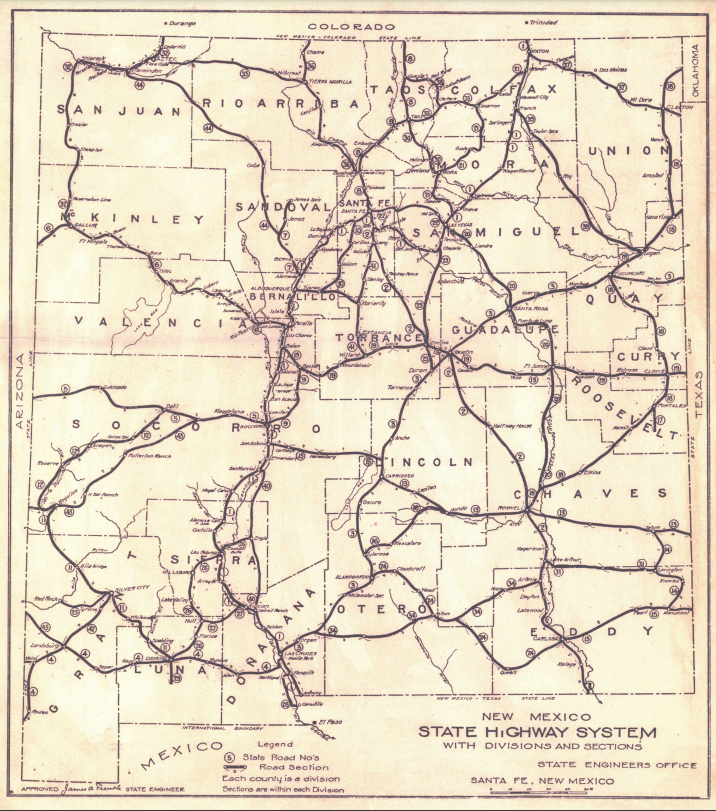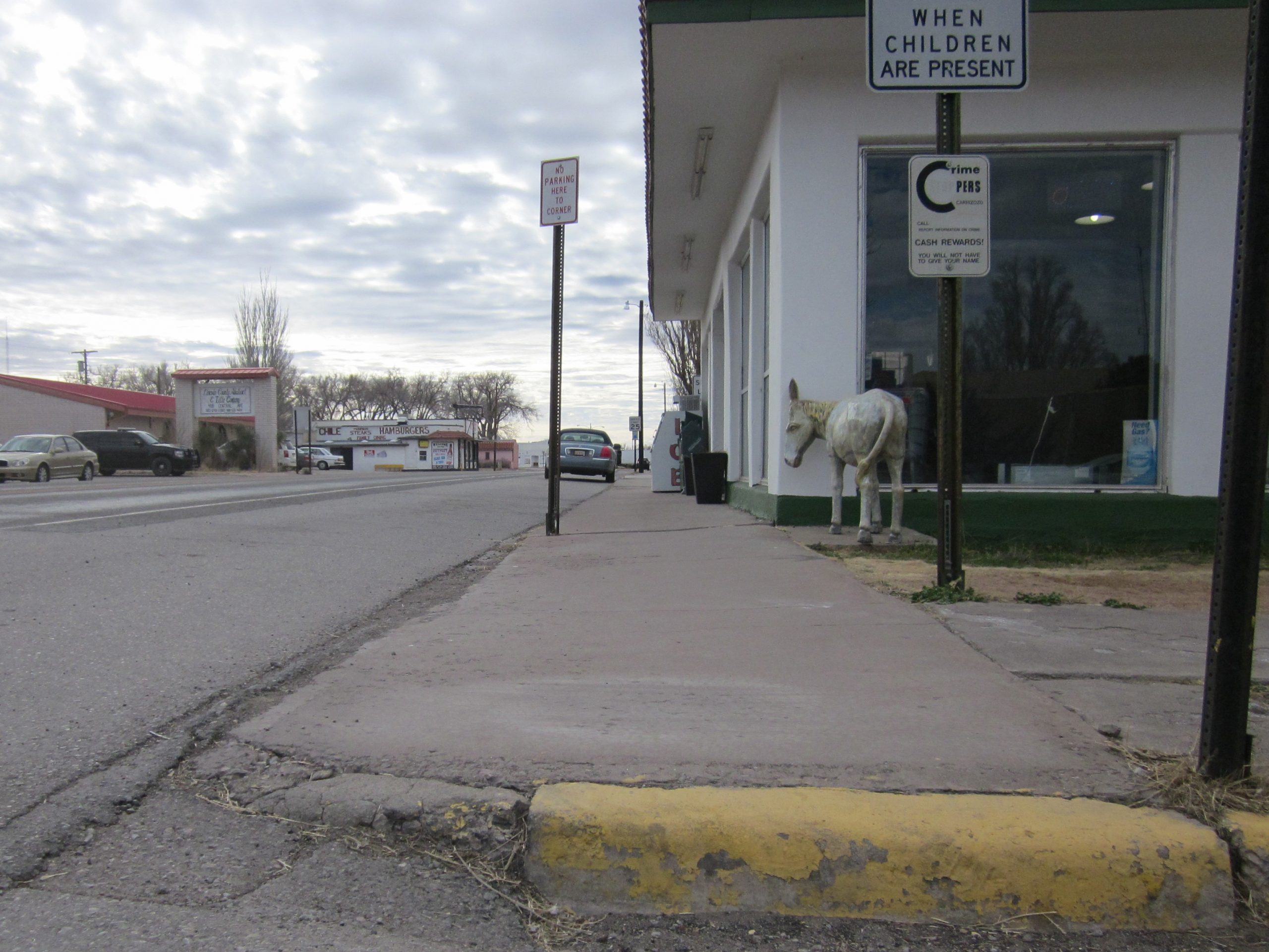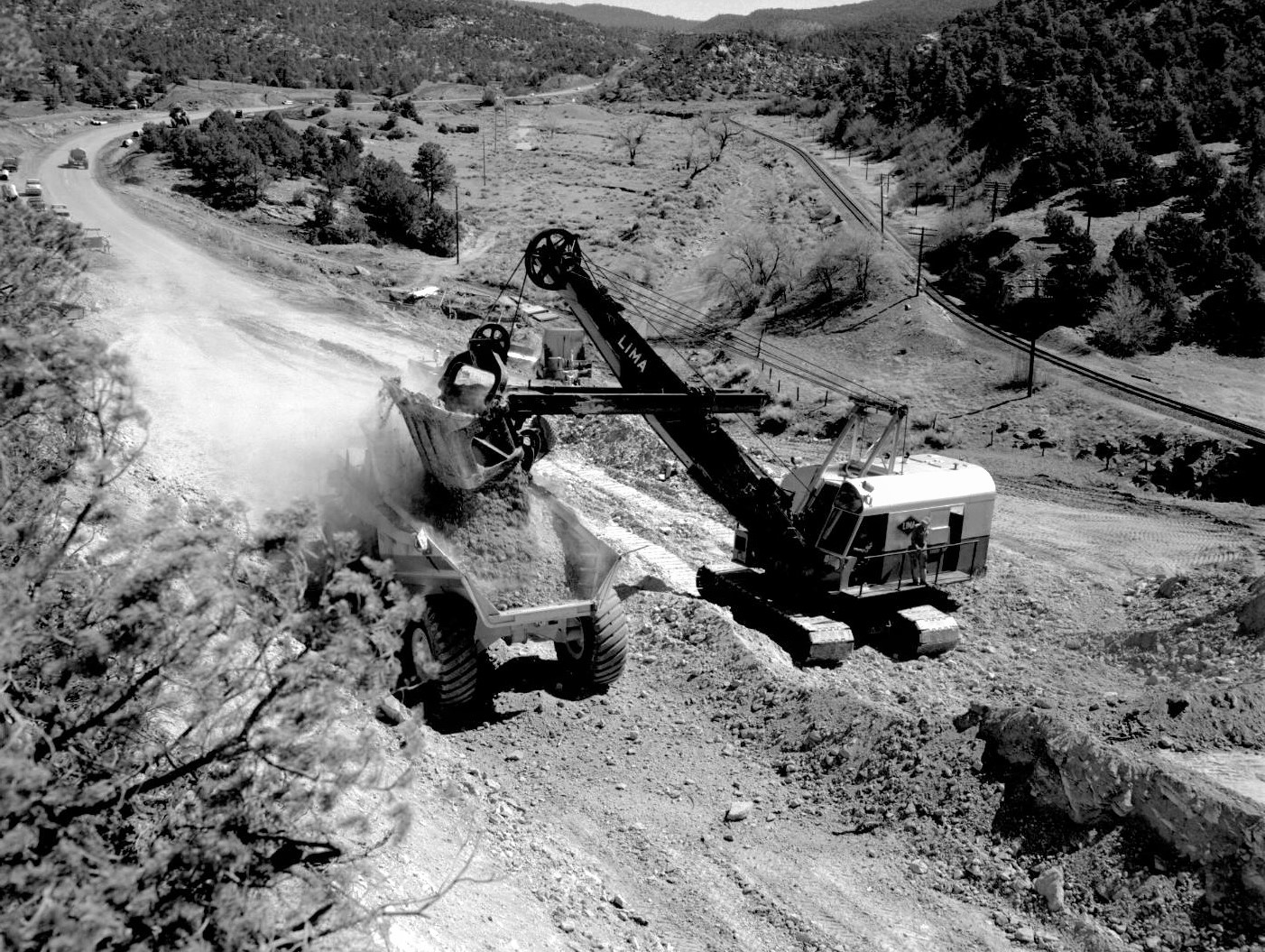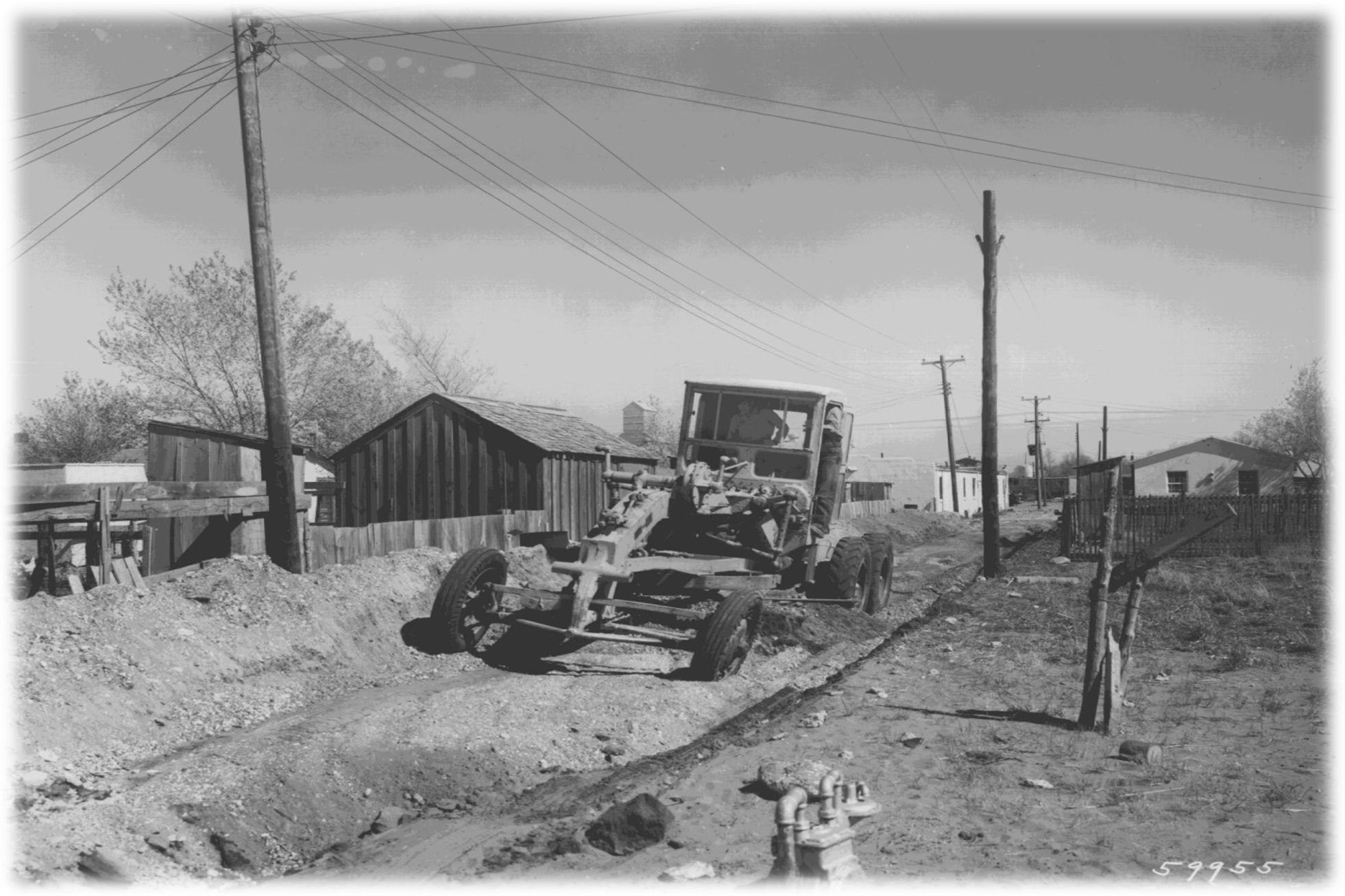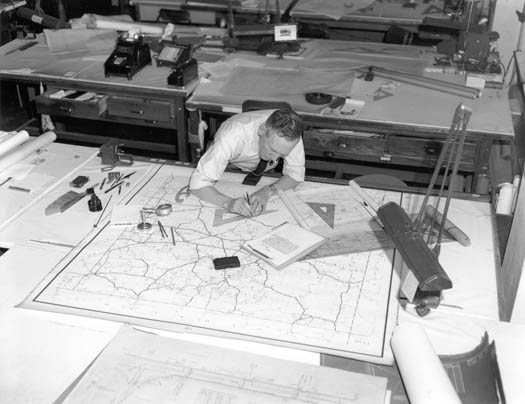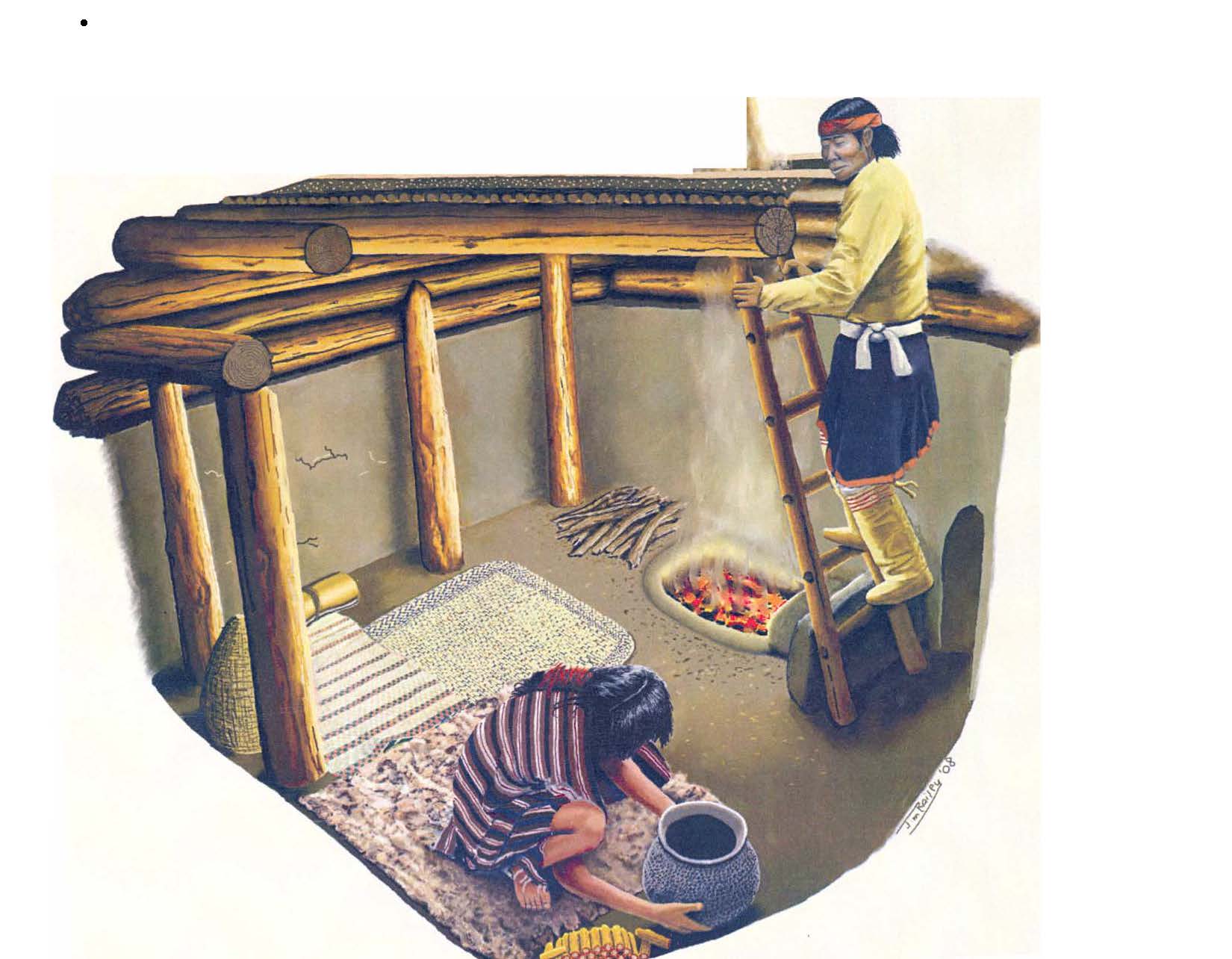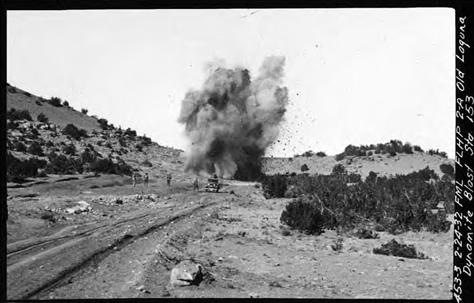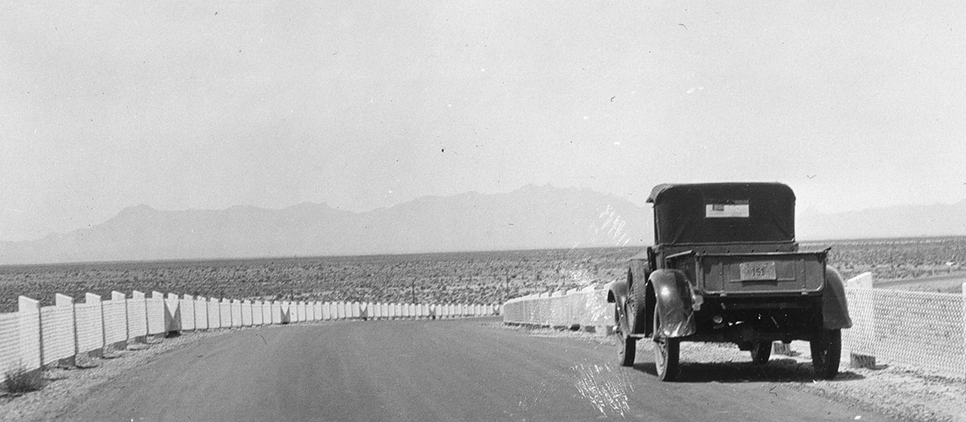Cultural Resources Section
The NMDOT Cultural Resources Section works to ensure that the historic fabric of New Mexico is maintained and appreciated by residents, visitors, and future generations.
The NMDOT has supported one of the most enduring cultural resources programs in the country beginning in the 1950s. The Cultural Resources (CR) Section is managed out of the NMDOT General Office in Santa Fe. Our team of historic preservation professionals provides assistance and guidance to six NMDOT districts across the state. The CR section works directly with districts, federal and state agencies, tribal and local governments, and other interested parties to balance New Mexico’s transportation needs with protecting and preserving our state’s cultural heritage along and adjacent to the NMDOT highway system.
The CR Section is responsible for NMDOT project compliance with standards set forth in federal historic preservation regulations such as the National Historic Preservation Act of 1966 (Section 106: 54 U.S.C. 306108) and its implementing regulation 36 CFR Part 800 and the Department of Transportation Act, Section 4(f) (23 U.S.C. 138 and 49 U.S.C. 303-Part 774).
State statutes include the New Mexico Cultural Properties Act (N.M. Stat. §§ 18-6-1 through 18-6-17, as amended through 2005), the New Mexico Cultural Properties Protection Act (N.M. Stat. §§ 18-6A-1 through 18-6A-6), and the Archaeological and Historic Preservation Act (N.M. Stat. §§ 18-8-1 through 18-8-8). In addition, the CR Section maintains collaborative partnerships with land managing and regulatory agencies including the State Historic Preservation Officer (SHPO) as well as 33 federally recognized tribes.
The CR Section plays a vital role in project development in cooperation with the Federal Highway Administration (FHWA). Section 106 and Section 4(f) require that federal agencies identify and take into account the effects undertakings may have on historic properties. The CR Section oversees the level of effort for identification of cultural resource sites and areas of importance to Native American communities prior to proposed NMDOT projects. Identified historic properties such as archaeological sites, buildings, and districts, listed or eligible for listing in the National or State Register of Historic Places, are avoided or effects minimized, when possible, through modification of project design. To make the federal and state compliance process more effective and efficient, programmatic agreements with the SHPO and other agencies help streamline the identification and consultation process while ensuring that mandated historic preservation compliance responsibilities are met.
Cultural Resources Survey Notification Form
NMDOT requires all consultants or contractors to complete a cultural resource survey notification form prior to conducting a cultural resource survey. Simply click the button below to complete the form.
Programs
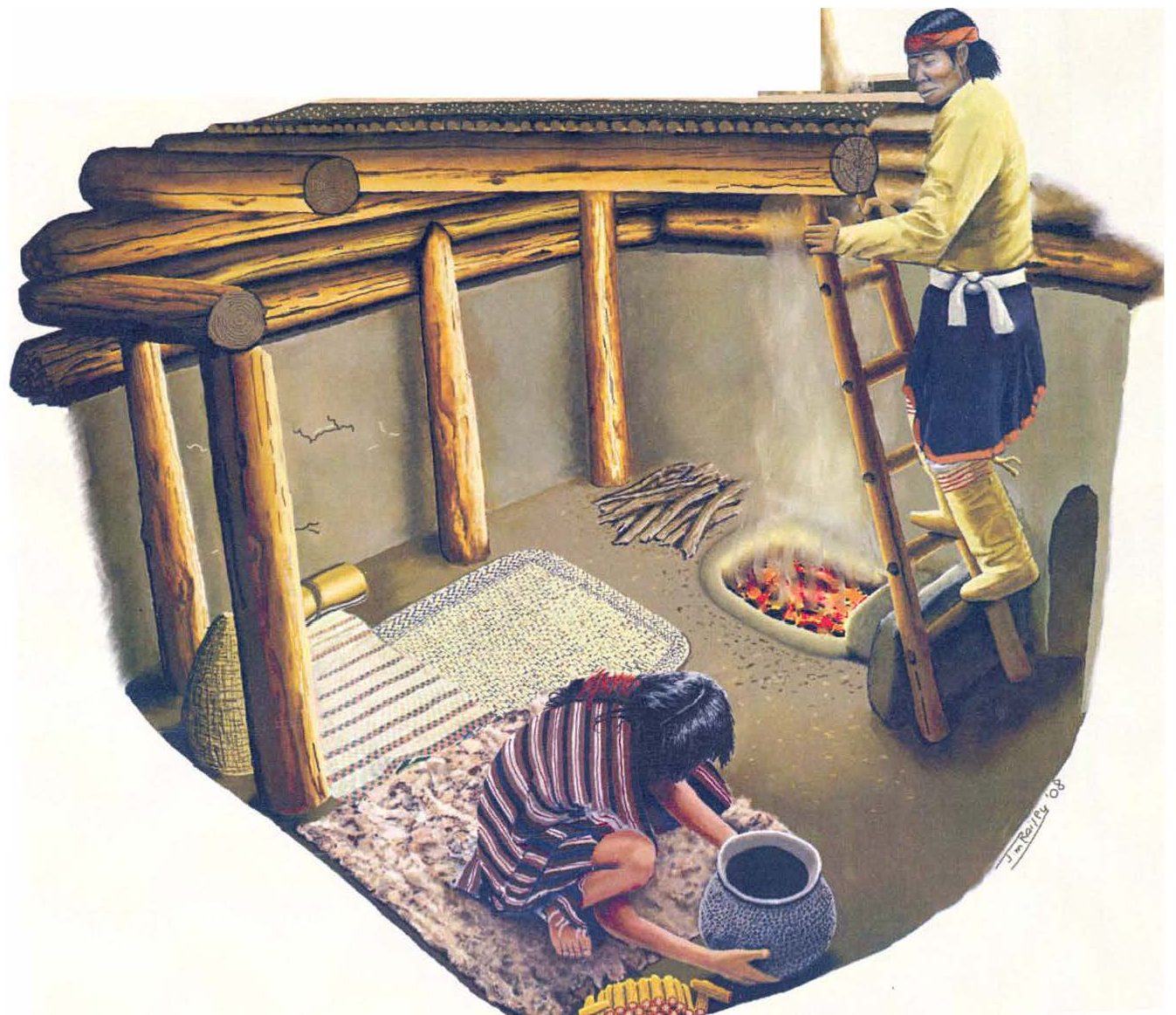
Tribal Consultation under NHPA Section 106 and State Tribal Collaboration Act
The consultation program for the NMDOT and FHWA recognizes the government-to-government relationship of federal government agencies with tribes. Using the Statewide Transportation Improvement Program (STIP) list of projects we invite tribes to identify projects and properties of interest early in the project development process so tribal comments and concerns can help avoid impacts to historic and traditional cultural properties. Continued contact on specific projects helps to protect tribal interests while keeping transportation projects on schedule.
Access to the NMDOT Tribal Consultation Portal offers detailed information on NMDOT projects relevant to tribal interests, searchable by project control number, title, route, county, STIP listing date, district, and tribal affiliated counties. The Portal aims to facilitate interactive communication with tribes during consultation efforts, especially in the planning process.
In addition to the Portal, the Public Involvement Calendar lists all public engagement meetings related to ongoing NMDOT projects.
Point of Contact:
Lia Tsesmeli, Ph.D.
Tribal Consultation Coordinator
Phone: 505-469-0086
Email: lia.tsesmeli@dot.nm.gov
Email: tribalcoordinator@dot.nm.gov
Tribal/Local Public Agency
Tribal and local governments (T/LPA) often receive funds administered through NMDOT. These funds can include both federal (usually FHWA funds) and state (usually capital outlay or local government funds [LGRF and TPF] ). The intent of the environmental review and certification process is to make sure that, through proper planning, effects to natural and cultural resources are avoided or minimized. The T/LPA is responsible for obtaining all necessary permits and certifications from the appropriate federal and state agencies. The T/LPA, usually through its consultant, initiates the environmental review process by submitting a Level of Effort form to the NMDOT Environmental Bureau. The project can proceed after the T/LPA receives the environmental certification (clearance) from the Bureau.
Point of Contact:
John R. (Bob) Estes
T/LPA Coordinator
Phone: 505-531-7177
Email: john.estes@dot.nm.gov
Contractor Located Activities
Contractors may propose activities/infrastructure needed to complete construction of a NMDOT project. Commonly proposed contactor located activities (CLAs) include construction yards, aggregate pits, and material-disposal sites. In general, CLAs are not certified during the initial environmental analysis and certification of the larger construction project. Contractors must submit a request form for all proposed CLAs. The purpose of the program is to coordinate the environmental and cultural-resource certification process among the contractor/consultant and all pertinent agencies for all proposed CLAs.
Point of Contact:
Jesse Murrell, Contractor Located Activity Coordinator
Phone: 505-490-5747
Email: jesse.murrell@dot.nm.gov
Permitted Right of Way Access: Utilities, Decel and Accel Lanes, & Driveways
Right-of-way Access permitting requires environmental review as part of the permitting process. The permit application is obtained by the permittee (project proponent) from the NMDOT district office that will permit the project. The environmental review is conducted by the NMDOT Environmental Bureau/Cultural Resources Section. The applicant shall provide information as specified in the NMDOT Utility Permit Application Checklist to the environmental reviewer. All required forms, instructions, and regulations will be provided upon request or upon authorization by the Department to the Engineer and Design specific utility relocations.
Prior to the permittee submitting a request for environmental review, the permittee shall determine land ownership of the highway right of way. Typically, highway rights-of-way are owned by the NMDOT when rights of way are adjacent to private land. When highways are adjacent to State Trust, federal (such as BLM and US Forest Service), and tribal lands, rights of way are owned by those entities. The NMDOT only provides environmental clearance for projects in highway right of way that is owned by NMDOT. NMDOT has easements on rights of way through State Trust, federal and tribal lands, and NMDOT issues permits on those easements, but NMDOT cannot provide information regarding the environmental requirements of those agencies. The permittee will need to contact the appropriate land managing agency for environmental clearance.
Point of Contact:
Gary Funkhouser, Permitted Projects Coordinator
Phone: 505-570-7291
Email: gary.funkhouser@dot.nm.gov
Airspace/Land Transfers/Subdivisions
Airspace and other right of way actions are often generated by outside parties that need to use NMDOT right-of-way or wish to acquire NMDOT right-of-way that the NMDOT no longer uses for transportation purposes. Requests are usually made by private parties to the NMDOT District Engineer. The District will review the request and submit its assessment to the NMDOT Right-of-Way Bureau. The Right-of-Way Bureau will then send the request to a number of other NMDOT bureaus for review and comment; the NMDOT Environmental Bureau being one of those. Environmental certifications are not usually issued for these types of actions because the action itself is non-ground disturbing. But the sale or lease of a NMDOT-owned parcel can lead to ground-disturbing activities by the purchaser, which can have effects on cultural and natural resources if present. The responsibility is on NMDOT to assess its parcels for resources, or any other areas of concern, prior to sale or lease.
Point of Contact:
Gary Funkhouser, Permitted Projects Coordinator
P.O. Box 1149
1120 Cerrillos Rd., Rm 205
Santa Fe, NM 87504-1149
Phone: 505-570-7291
Email: gary.funkhouser@dot.nm.gov
CONTACT US:
Cultural Resource Section Point of Contact:
Gwyneth Duncan, Cultural Resources Section Manager
P.O. Box 1149
1120 Cerrillos Rd., Rm 205
Santa Fe, NM 87504-1149
Phone: 505-699-1633
Email: Gwyneth.Duncan@dot.nm.gov
Cultural Resource Section Supervisors Contact Information:
Emily Dossett, Cultural Resource Project Design Supervisor
Phone: 505-469-9993
Email: emily.dossett@dot.nm.gov
Gary Funkhouser, Cultural Resources Programs Supervisor
Phone: 505-570-7291
Email: gary.funkhouser@dot.nm.gov

